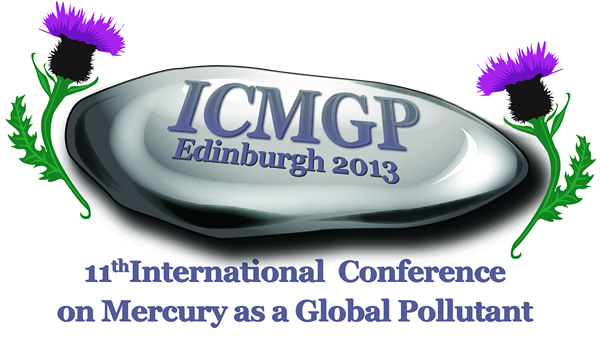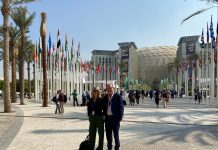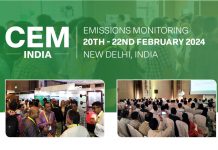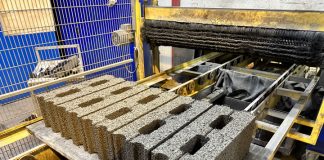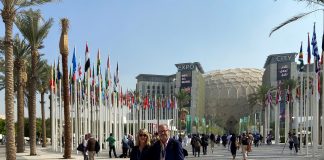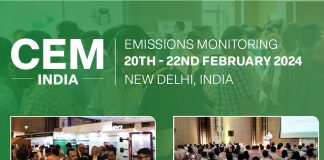The International Conference on Mercury as a Global Pollutant (#ICMGP) will take place in Edinburgh, Scotland, from 28th July – 2nd August 2013. The event is the 11th in a series that began in Sweden in 1990 and follows closely behind an international agreement to reduce global mercury emissions.
Themed ‘Science Informing Global Policy’ the ICMGP events have been created to promote discussion and find ways to tackle the environmental and health effects of mercury. “This year’s conference could not have been better timed,” says Conference Chair Dr Lesley Sloss, “the UNEP Global Legally Binding Treaty on Mercury was signed by 140 countries in January this year, so there is now much debate on how to implement the treaty, and this is reflected by the level of participation at the conference, which will welcome delegates from over 100 countries.”
Why Mercury?
Mercury is recognised as a chemical of global concern (UNEP, 2006) due to its long-range transport in the atmosphere, its persistence in the environment, its toxicity, its ability to bio-accumulate in ecosystems and its significant negative effect on human health.
Some types of bacteria and fungi can change mercury into its most toxic form, methyl mercury, which accumulates to some degree in all fish, but especially in predatory fish such as shark, swordfish, and certain species of tuna.
Mercury comes from a range of natural sources such as volcanoes, soils, undersea vents, mercury-rich geological zones and forest fires, as well as from fresh water lakes, rivers and oceans. However, human activity has increased the amount of mercury in the environment in several ways, including through a variety of combustion and industrial processes such as coal-fired power generation, metal mining and smelting, and waste incineration. Products such as batteries, fluorescent tube lights, thermometers, thermostats, switches and relays, barometers and dental fillings may contain mercury.
Mercury has been a part of our lives for many years, however, the problems associated with mercury in the environment now far outweigh any benefit so it is time for action.
During the week of the Conference, there will be over 400 oral presentations, over 400 poster presentations, an Exhibition featuring companies from around the world, and three panel sessions covering 1) industrial emissions, 2) toxicity and 3) how to implement the Treaty. Anybody wishing to attend the Conference can register at www.mercury2013.com.
Conference presentations
A packed conference agenda will address every significant issue relating to the management of mercury. For example, there will be papers on analytical methods, mercury sources, control technologies, bioaccumulation, and mercury issues relating to polluted land, water and air. Speakers will also address climate change, marine ecosystems, human exposure and regulatory issues.
A wide range of Special Sessions are also planned, covering topics such as the involvement of mercury in oil and gas processing, forestry, rice agriculture, coal combustion, marine mammals, gold mining and health effects in children. The development of a Global Mercury Observation System will feature in a number of sessions and others will address experiences gained in China, Canada, the Seychelles and the Faroe Islands.
Panel Sessions
1. Industrial emissions
Globally, industrial emissions of mercury dominate the total anthropogenic output, so any reduction of mercury emissions will challenge industries such as the energy sector, metal manufacturing, cement production, the chemical industry, waste incineration and others. In many countries environmental regulations limit emissions, and the recent Treaty is likely to accelerate the implementation of tighter rules. This panel session will therefore address the challenges posed by the need to reduce industrial emissions.
Representatives from relevant industries will be invited 1) to briefly introduce the challenge arising from the need to reduce emissions and 2) to participate in an open floor discussion on how to meet the challenge without jeopardising production, financial viability, and employment status.
2. Mercury toxicity
This panel session will explore topical public concerns about mercury and health. Experts in this field will discuss the toxicological significance of mercury exposure from dental amalgams, vaccines and fish consumption for vulnerable groups, and will debate whether current concerns are scientifically justified. “The subjects covered in this session will be highly contentious and should result in a heated debate,” says Prof. K. Clive Thompson who will chair the panel with Eric Uram from SafeMinds.
3. Evaluating the effectiveness of the Global Mercury Treaty
A panel comprised of scientists and policy makers will explore the gaps, needs, hurdles, government participation and scientific capacity (especially in the developing world) for creating a global mercury monitoring system that can evaluate the effectiveness of the new mercury treaty. The panel will discuss issues such as: How to create standardised and replicable methods for monitoring the effectiveness of efforts to reduce mercury among different countries of the world; How to best communicate information about progress; What basic components are needed for cost-effective and customised national plans for monitoring; and Where standardised monitoring stations should be located. Panel topics will include (a) monitoring changes in the largest source of mercury pollution – artisanal small-scale gold mining; (b) monitoring changes in environmental mercury resulting from treaty actions, using the Global Mercury Observation System; and (c) evaluating changes in human exposure through bio-monitoring.
International Exhibition
Mercury 2013 is likely to be the largest ever exhibition of mercury-related expertise ever held under one roof. Featuring around 40 of the world’s leading organisations in this field, the exhibition will include the manufacturers of monitoring equipment for testing food and other products in addition to ambient air, stack/chimney emissions, water and soil. For example: Milestone will demonstrate the latest features of direct mercury analysis without acid digestion or wet chemistry; Tekran will unveil the latest version of their mercury monitors and Gasmet will launch a new continuous mercury emissions monitor with a low detection limit and low capital and operational costs.
Experts from both research laboratories and commercial laboratories will be available, in addition to companies that specialise in mercury treatment and abatement technologies, as well the providers of mercury safety products.
The manufacturers of laboratory analytical equipment will also be present, so the event will provide a unique opportunity to view all of the technologies available to comply with regulatory requirements and to monitor the progress of the Mercury Treaty.
Registered delegates will have free access to the exhibition but it will also be possible to purchase day passes to the exhibition/poster displays from www.mercury2013.com.
Edinburgh
A full social programme has been established covering everything from white water rafting to a tour of Edinburgh Castle. However, with the world-famous Edinburgh Fringe Festival starting as the Conference finishes, this event offers a fantastic opportunity to make the most of this trip to Scotland – you could call it a conference with fringe benefits!
Ends Words: 1,122
Information for editors:
1. Please add Mercury 2013 to your event diary. Many thanks
2. Contact details:
Marcus Pattison
Mercury 2013 Organiser
Oak Court Business Centre
Sandridge Park, Porters Wood,
St. Albans, Hertfordshire,
AL3 6PH,
ENGLAND.
Telephone: +44 (0) 1727 858840
Facsimile: +44 (0) 1727 840310
Email: info@mercury2013.com
Web: www.mercury2013.com
Posted by Buttonwood Marketing – Technical Scientific Environmental Sustainability PR and Marketing Communications Experts

